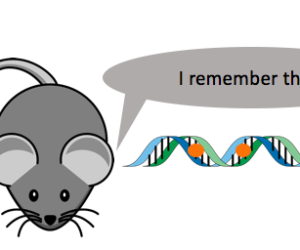For a long while, we have generally known that neurons within the hippocampus of our brains are responsible for memory. The current model for memory storage comes from the plasticity of neuronal connections, but researchers have recently found that there are active changes at the genetic level. within that come from external factors and are linked to retaining long-term memories. These findings have implications in stress-related learning and memory disorders.
Keywords: memory, DNA, epigenetics.
The initial conception of memory was that of an infinite library-style cabinet system with each experience being logged, categorized, and put in its rightful place to be recalled later. Through more studies, the model for how memory works has changed. Instead, a more accurate model of memory is based on neuronal signals being strengthened, like tire tracks on a dirt road.
Going a few levels deeper into the machinery of memory, researchers are looking beyond the cellular level right down to the genes within of the hippocampal neuronal cells of rats. They wanted to look at the changes in gene expression within the hippocampus looking at different levels of learning by putting rats into different learning environments. One group was simply placed inside of a box for a few minutes (context learning), and one was placed into a box that registered small electric foot-shocks (threat learning), with one “naive” group without any box acting as the control. Apart from learning all too quickly that the world is a dangerous place, the threat learning rats had changes in their behavior and epigenetics, chemical genetic alterations.

Schematic of the experimental setup.
Epigenetic gene regulation involves making a physical mark via a chemical modification to DNA that has a lasting impact on gene activity. These changes are usually additions of small groups, like methyl or acyl, to nucleotides that alter DNA’s structure without destroying or denaturing it. Within the cells, DNA is coiled around histones, clusters of proteins that wind DNA up into chromosomes. For the genes within the chromosomes to be replicated, histones and DNA have to be unwound to expose areas where replication proteins can bind. Epigenetic tags are one component of causing coiling and uncoiling. (The Genetics Learning Center from University of Utah has made an interactive demonstration.)

Epigenetic modifications can change how DNA (blue) is packed. In this case, methylation (orange) causes the histones (grey) to compact preventing transcription and gene expression from occurring.
With the threat learned rats in particular, DNA methylation of the cytosine nucleotide was increased within structures regions of DNA that are concentrated with cytosines (C), followed by a guanine (G), and separated by the phosphate backbone (p). These structures, known as “CpG islands,” are normally found near start sites of gene expression. Within the double helix, C is paired with G so it allows for modifications to be propagated after replication so the alterations are kept.
These changes in methylation of were only seen within the Threat Learning group, and not within the either the naive or context-learning group. Memory was tested by seeing whether or not the rats paused when placed back inside the box a week later, where only the threat-learning group showed a paused behavior. Moreover, the changes were targeted towards specific functions like neuron generation, which corresponded to an increase in methylation.

Threat-learning group showed both the changed behavior of pausing when returned to the box , and increased methylation changes to CpG islands. This suggest that methylation has an impact on long-term memory.
These observations together suggest that having intense experiences has a greater impact on both memory and epigenetic change. With learning related diseases — such as Alzheimer’s Disease and, more related to these rats studies, PTSD — being associated with changes in CpG methylation, there is a lot of interest in figuring out how to alleviate issues stemming from these disorders.
How exactly a change in methylation interacts with cellular machinery and that relationship with neuronal stimuli is still very much unclear. Using foot shocks, too, might be conflating memory- and fear-based alterations to the epigenome. But nevertheless, the observation that gene transcription can be altered in an experience-dependent way within the hippocampus suggests that DNA modifications may play a crucial role in the stabilization of long-term memory.


Leave a Reply